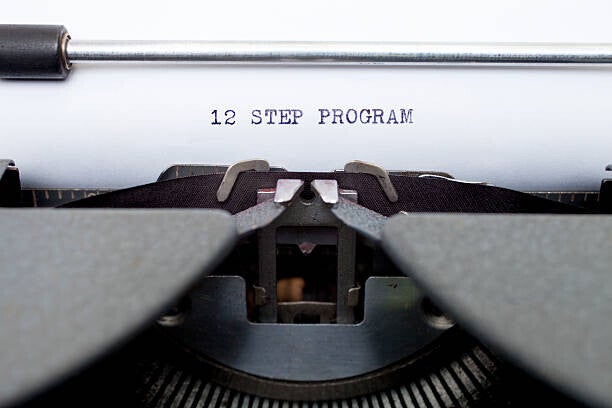Beyond the ordinary
Key Differences and Alignment with Harm Reduction Principles:
- Focus on Behaviors, Not Just Substances: The language emphasizes "behaviors or substances" and "unsafe behaviors" to be inclusive of a wider range of activities where harm reduction might be sought (e.g., gambling, eating disorders, sexual practices, etc.), not just drug or alcohol use.
- "Powerless Over Certain Behaviors/Substances": This is a crucial distinction. It acknowledges that individuals might struggle with aspects of their relationship with a substance or behavior, but it doesn't demand complete surrender of the substance or activity itself.
- Emphasis on "Safer Choices" and "Reducing Harm": These phrases are woven throughout, directly aligning with the core tenets of harm reduction.
- No Requirement for Abstinence: The steps are designed to support individuals in making their use or engagement with certain behaviors less harmful, without mandating complete cessation.
- "Restore Sanity and Make Safer Choices": This reframes the traditional "restore to sanity" in terms of practical, safer decision-making.
- Adaptable "Power": The concept of a "Power" remains flexible, allowing individuals to define it as they see fit – whether it's a spiritual entity, the community, inner strength, or a combination.
- Continuous Improvement and Flexibility: Step 10 is particularly important for harm reduction, as it emphasizes ongoing adjustment and adaptation of strategies, rather than a one-time fix.
- Sharing the "Harm Reduction Message": Step 12 focuses on carrying the message of harm reduction, not necessarily recovery in the traditional abstinence-based sense.
This adaptation aims to provide a structured, supportive framework for individuals who are seeking to minimize negative consequences associated with their behaviors or substance use, while respecting individual autonomy and diverse pathways to well-being.

TAKE A JOURNEY THROUGH THE STEPS
The Twelve Steps of Harm Reduction Anonymous (HRA)
- We admitted we were powerless over certain behaviors or substances, and that our lives had become unmanageable in specific areas where we sought to reduce harm.
- This step acknowledges a personal challenge without requiring complete abstinence, focusing on specific areas where reduction or safer practices are desired.
- Came to believe that a power greater than ourselves could help us restore sanity and make safer choices.
- This step retains the spiritual (or community-based) aspect of "higher power" but frames it around the ability to make more rational and safer decisions, not necessarily complete cessation.
- Made a decision to turn our will and our lives over to the care of this Power, as we understood It, in pursuit of reducing harm.
- Here, the "turning over" is specifically directed towards the goal of harm reduction, implying a commitment to the process and the support of the community.
- Made a searching and fearless moral inventory of our behaviors related to the harm we wished to reduce.
- This step encourages self-reflection on the specific behaviors that contribute to harm, without judgment of the substance or activity itself, but rather its impact.
- Admitted to our God, to ourselves, and to another human being the exact nature of our harm-inducing behaviors.
- Sharing and accountability are key, focusing on the specific actions that have caused harm, rather than a blanket admission of addiction.
- We were entirely ready to have our God remove all these defects of character that contribute to unsafe practices.
- This step focuses on readiness to change the internal patterns or character defects that lead to increased harm, rather than the complete removal of a substance or activity.
- Humbly asked our Power to remove our shortcomings that hinder our ability to practice harm reduction effectively.
- A request for help in overcoming obstacles to safer practices, acknowledging personal limitations, and seeking support.
- Made a list of all people we harmed as a result of our unsafe behaviors and became willing to make amends to them all.
- Accountability for the impact of one's unsafe actions on others, crucial for repairing relationships and fostering personal growth.
- Made direct amends to such people wherever possible, except when to do so would injure them or others, and when the harm was directly related to our unsafe behaviors.
- Action-oriented step to repair past harms caused by specific behaviors, while prioritizing safety and avoiding further harm.
- Continued to take personal inventory, and when we were wrong, promptly admitted it and adjusted our harm reduction strategies.
- Ongoing self-assessment and flexibility are critical for harm reduction. This step emphasizes continuous learning and adaptation of strategies.
- Sought through prayer and meditation to improve our conscious contact with our Power, as we understood It, praying only for knowledge of Its will for us and the power to carry that out in our harm reduction journey.
- This step retains the spiritual or reflective component, focusing on guidance and strength to maintain and evolve harm reduction practices.
- Having had a spiritual awakening as a result of these Steps, we tried to carry this message to others seeking harm reduction, and to practice these principles in all our affairs.
"A cornerstone of our program is the adaptation of the twelve steps of Alcoholics Anonymous. These steps provide a framework for self-reflection, personal growth, and spiritual development. This gave birth to the 12 steps of Harm Reduction Anonymous. Working through the twelve steps allows us to:
- Acknowledge the reality of our self-inflicted harm and its consequences.
- Find hope in God or power greater than ourselves, whatever that may mean to each of us individually.
- Take a courageous and honest look at ourselves and our past actions.
- Make amends where possible and strive to live with greater integrity.
- Carry the message of hope and support to others who are still struggling."
(JB3)